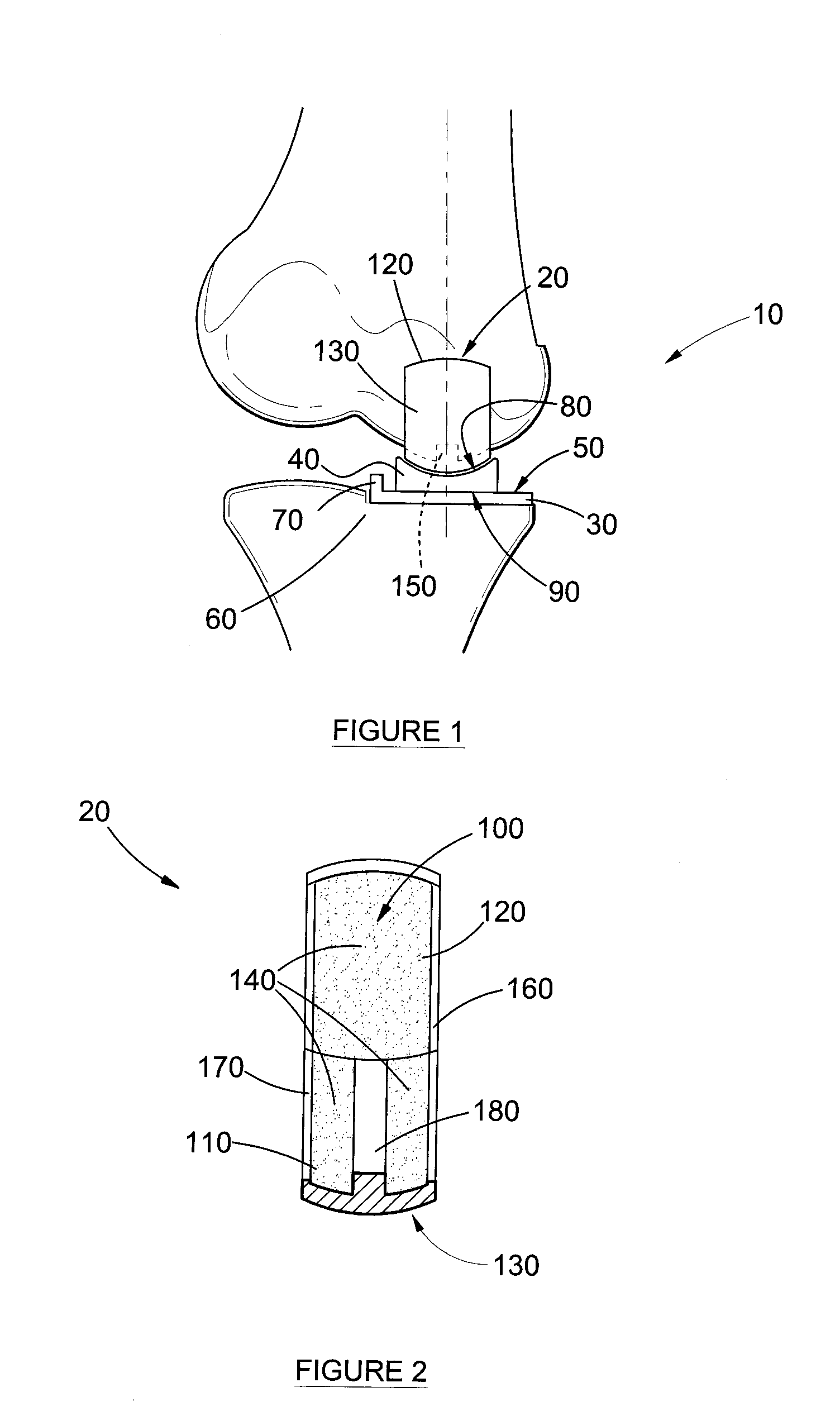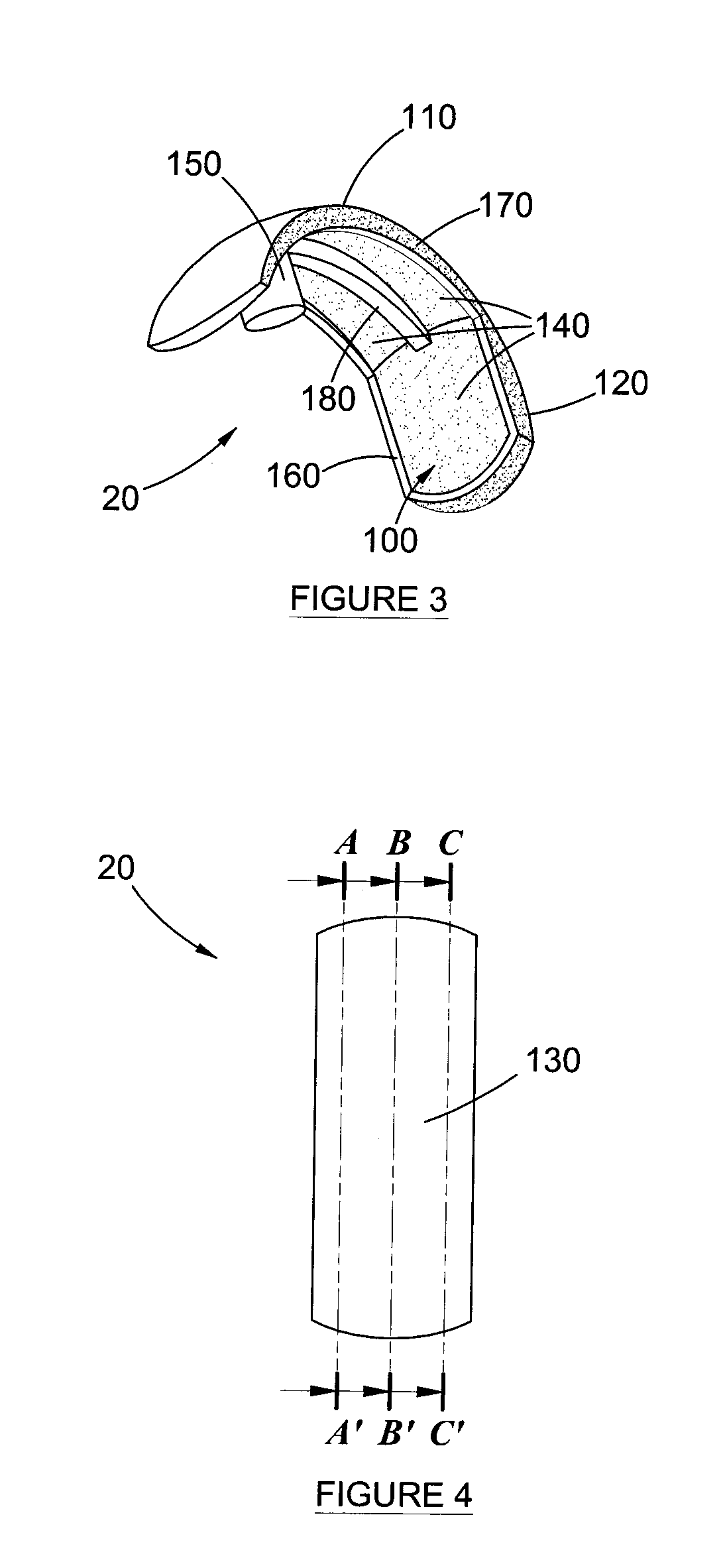Orthopedic Prosthesis
a prosthesis and orthopedic technology, applied in the field of orthopedic prosthesis, can solve the problems of knee joint cracking and wear, accelerating the wear process, and causing the menisci to crack and wear away
- Summary
- Abstract
- Description
- Claims
- Application Information
AI Technical Summary
Benefits of technology
Problems solved by technology
Method used
Image
Examples
Embodiment Construction
[0043]In the drawings, like numerals refer to like parts, unless otherwise indicated.
[0044]Referring firstly to FIG. 1, reference numeral 10 generally refers to an improved orthopedic prosthesis according to one form of the present invention. The orthopedic prosthesis 10 comprises a femoral component generally indicated by reference numeral 20, and a tibial component 30. A spacer bearing 40 is positioned between the femoral component 20 and the tibial component 30.
[0045]The tibial component 30 is of the type conventionally utilized in the art and consists of a tibial upper bearing surface 50 in a substantially planar D-shape when viewed in plan view (not shown). The tibial planar upper bearing surface 50 receives the spacer bearing 40 in a floating arrangement. Typically the tibial upper bearing surface 50 is highly polished in order to optimize free movement of the spacer bearing 40 thereon and to reduce friction therebetween. The tibial component 30 further has a lower attachment ...
PUM
| Property | Measurement | Unit |
|---|---|---|
| thickness | aaaaa | aaaaa |
| thickness | aaaaa | aaaaa |
| length | aaaaa | aaaaa |
Abstract
Description
Claims
Application Information
 Login to View More
Login to View More - R&D
- Intellectual Property
- Life Sciences
- Materials
- Tech Scout
- Unparalleled Data Quality
- Higher Quality Content
- 60% Fewer Hallucinations
Browse by: Latest US Patents, China's latest patents, Technical Efficacy Thesaurus, Application Domain, Technology Topic, Popular Technical Reports.
© 2025 PatSnap. All rights reserved.Legal|Privacy policy|Modern Slavery Act Transparency Statement|Sitemap|About US| Contact US: help@patsnap.com



